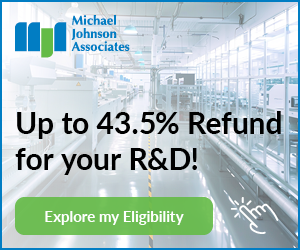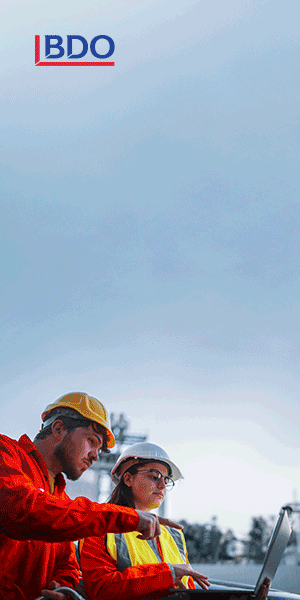Towards 3% R&D – patent box still missing from innovation system by BDO

Today in our editorial series – Towards 3% R&D – Turbocharging Australia’s Innovation Effort – Daniel Splatt and Michelle Tan highlight the benefits of a patent box system, much advocated but missing from our innovation ecosystem.
The World Intellectual Property Organisation’s Global Innovation Index has revealed a steady decline in Australia’s knowledge, technology, and creative output over recent years despite consistently high input factors.
A key contributor to this is the gap between research, innovation, and commercialisation, with intellectual property often being shifted offshore when it comes to the point of commercialisation.
Chapter four of this 2023 report from the House of Representatives Standing Committee on Industry, Science and Resources acknowledges that ‘commercialisation has long been considered a weakness in the Australian innovation system’, further stating that ‘international comparisons show Australia is weak in research translation and commercialisation.’
One of the reasons companies relocate their intellectual property offshore for commercialisation is the more favourable taxation arrangements available overseas.
In Australia, profits on corporate intellectual property are taxed at the relevant corporate income tax rate, which is currently either 30 per cent or 25 per cent (depending on an entity’s annual aggregate turnover).
As such, the preferential tax treatment in a lower tax jurisdiction incentivises companies to commercialise Australian-developed intellectual property and technology overseas.
As a result of companies shifting their commercialisation efforts offshore, Australia does not receive the flow-on benefits of creating the related intellectual property, including the creation of new jobs to drive employment and economic growth.
Examples of Australian innovation efforts that have been commercialised overseas include the black box flight recorder, heart pacemaker and photovoltaic PERC solar cells.
Patent box – A potential solution
One way of appropriately incentivising such commercialisation would be the introduction of a patent box regime in Australia.
Such a regime would likely overcome the current problem by providing a concessional tax treatment to profits derived from eligible intellectual property, thereby incentivising companies to retain the intellectual property in Australia as it is commercialised.
A well-constructed patent box regime has the potential to support Australian innovation by bridging the gap between the research and development and commercialisation of intellectual property.
Over 20 jurisdictions (including the United Kingdom, Singapore, China and 13 of 27 European member states) have introduced patent boxes or similar regimes that offer lower tax rates on products where the patent is locally owned.
Following the introduction of such schemes in these jurisdictions, many Australian medical companies, including ResMed, CSL and Cochlear, have lobbied the Australian Government to follow suit.
The idea of introducing a patent box regime in Australia is not new and was previously considered by the Australian Government on two separate occasions – 2015 and 2021.
It was rejected in 2015 based on a concern that the reduction in tax revenue as a result of the concessional tax rate would outweigh the benefit of any increase in tax revenue from additional commercialisation activity in Australia.
However, this report was based on now outdated modelling and included some overly simplistic conclusions, including a high risk that R&D leading to relevant patent applications would be undertaken overseas.
Such a risk could easily be overcome with appropriate legislation, as was included in the most recent bill in 2021. That bill sought to implement a patent box for new patents in the medical and biotechnology sectors, with a concessional 17 per cent corporate tax rate.
@AuManufacturing is publishing contributions from readers for our series – Towards 3% R&D – turbocharging our national innovation effort – over a, month and will shortly publish contributions in an e-Book. Information: Peter Roberts, 0419 140679 or write to [email protected].
Following a discussion paper and consultation, the bill was introduced to the House of Representatives in February 2022. However, it was never passed and lapsed at the dissolution of the previous Parliament.
In our submission to the Government’s consultation on their 2021 discussion paper, we argued that any patent box regime introduced in Australia should not be limited to individual sectors if intended to be retained consistently for years to come.
Legislation of a regime would require the introduction of a new bill to Parliament – providing an opportunity to rectify the shortcomings of the previous bill and secure a simple, attractive, and effective patent box regime for Australia.
We also note there was feedback to reduce the concessional rate below 17 per cent to make it globally competitive.
However, the patent box tax rate would need to be consistent with the OECD’s Pillar Two 15 per cent global minimum tax.
If the rate were to be reduced below 17 per cent, it would likely not account for some of the vagaries of the ‘GloBE’ calculations and may inadvertently result in patent box entities paying some domestic minimum tax where their effective tax rate calculated under the Pillar Two rules ends up below 15 per cent.
Global events of recent years, including the pandemic, have highlighted the importance of local commercialisation and the corresponding impact on fostering a broader innovation ecosystem.
A patent box regime applicable across all industries, not just the medical and biotech sectors, is key to retaining and commercialising intellectual property in Australia and ensuring we remain globally competitive.
To ensure the patent box regime is comparable with other jurisdictions, it should also be industry agnostic, like the regimes in Europe, to attract more companies to retain their intellectual property in Australia.

Dan Splatt (pictured above) is a Director with BDO’s R&D and Government Grants team in Brisbane. He has extensive experience assisting clients in accessing the R&D Tax Incentive and a range of competitive grants, with expertise in the biotechnology, pharmaceutical, food, and agribusiness sectors. Michelle Tan (main picture) is a Senior Consultant with BDO’s R&D team in Brisbane. She has five years of experience in providing R&D Tax Incentive services to small and medium corporations, including ASX-listed large corporate groups, with expertise in the aquaculture, waste management, manufacturing and software industries.
This series is brought to you through the support of our principal sponsor, public accounting, tax, consulting and business advisory BDO, and R&D tax incentive consultancy Michael Johnson Associates.
Pictures: BDO/Michelle Tan and Daniel Splatt
@aumanufacturing Sections
Analysis and Commentary Awards Defence Manufacturing News Podcast Technology Videos











